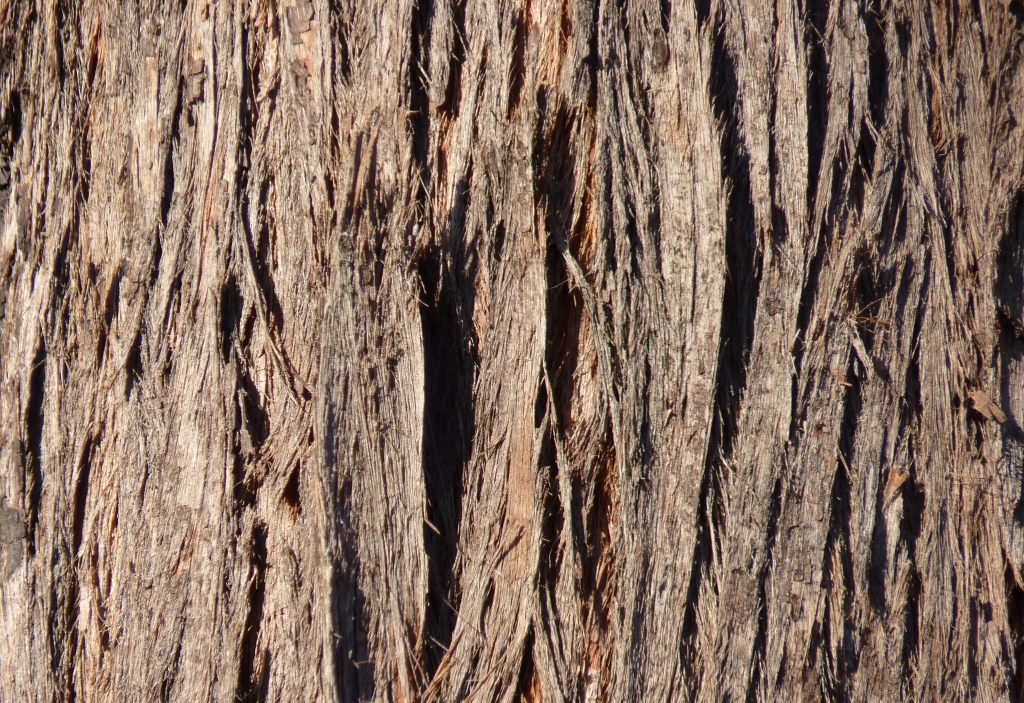Eucalyptus macrorhyncha
F.Muell. ex Benth. Red StringybarkTree to 35 m tall; bark rough to small branches, stringy. Juvenile leaves initially sessile, opposite for few pairs then petiolate, alternate, elliptic to ovate, undulate, scabrous above and below, to 8 cm long, 5 cm wide, green or blue-green, soon becoming glabrous; adult leaves petiolate, lanceolate, oblique, 9–14 cm long, 1.2–2.5 cm wide, concolorous, glossy, green; reticulation moderate, with numerous island oil glands. Inflorescences axillary, unbranched; peduncles to 1.6 cm long, 7–11-flowered; buds pedicellate, diamond-shaped, to 0.9 cm long, 0.5 cm diam., no scar (single operculum); operculum strongly beaked; stamens irregularly flexed; anthers dorsifixed, reniform; ovules in 2 vertical rows; flowers white. Fruit pedicellate, hemispherical, to 1 cm long, 1.2 cm diam.; disc broad, ascending; valves 3, exserted; seed dark brown, glossy, smooth, pyramidal but distorted by one curved face, hilum terminal. Flowers Jan.–Jun.
Wim, VVP, VRiv, GipP, OtP, Gold, CVU, GGr, DunT, NIS, EGL, EGU, HSF, HNF, MonT, VAlp. Also SA, NSW. Widespread and common on poor, shallow soils in low to moderate rainfall zones from Stawell east to the upper Murray River area. Also east from the Brisbane Range to Mt Coopracambra in East Gippsland.
Distinct among the stringybarks by its beaked buds and large fruits with the massive domed disc.
Presumed hybrids between E. macrorhyncha and E. muelleriana or E. obliqua have been observed in the Warrandyte/Lilydale area (see E. ×brevirostris).
Brooker, M.I.H.; Slee, A.V. (1996). Eucalyptus. In: Walsh, N.G.; Entwisle, T.J., Flora of Victoria Vol. 3, Dicotyledons Winteraceae to Myrtaceae, pp. 946–1009. Inkata Press, Melbourne.
 Spinning
Spinning


